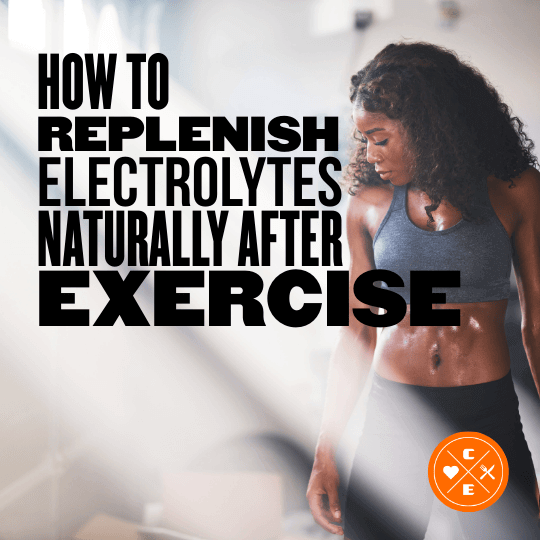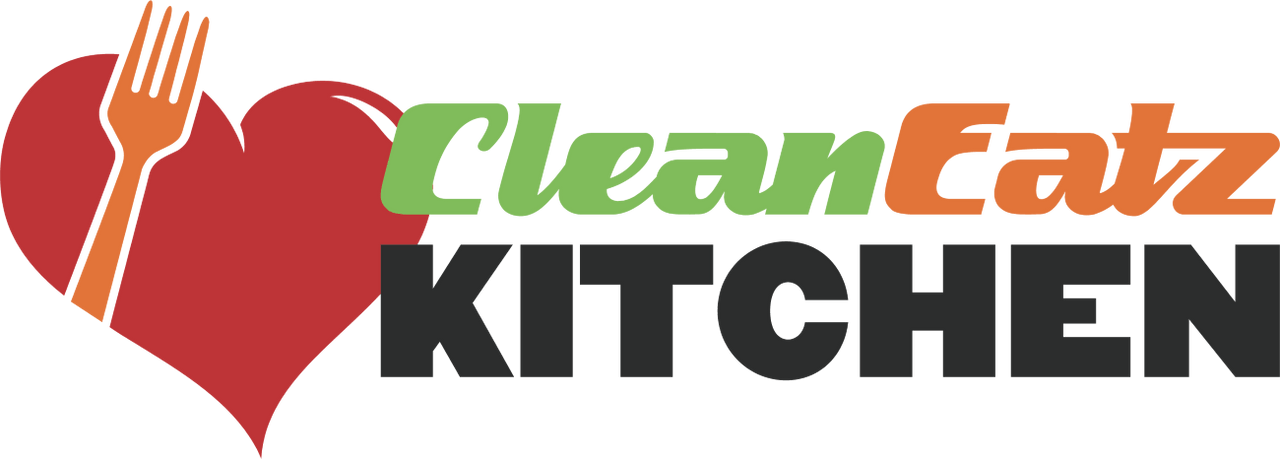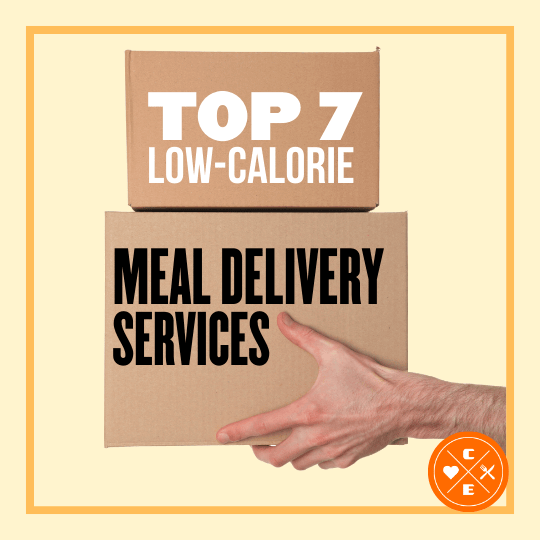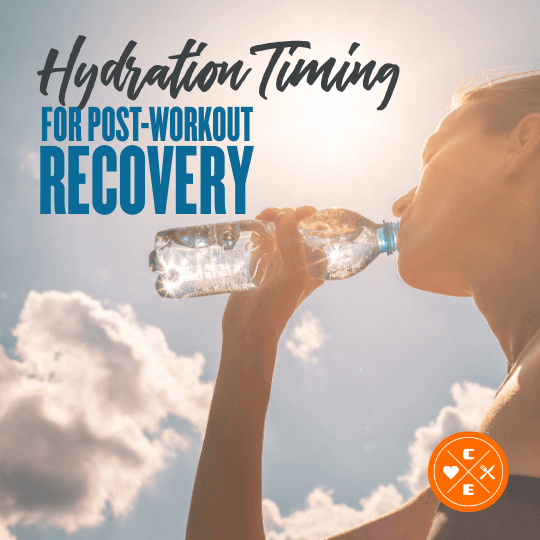
How to Replenish Electrolytes Naturally After Exercise
Jason Nista
Nutrition
|
Exercises & Fitness
10 minute read
After a workout, your body needs more than just water to recover - it needs electrolytes. These vital minerals like sodium, potassium, magnesium, and calcium help prevent muscle cramps, restore energy, and maintain fluid balance. Instead of sugary sports drinks, you can replenish electrolytes naturally with whole foods and simple homemade drinks.
Key Takeaways:
- Best Foods for Electrolytes:
- Sodium: Seaweed snacks, celery, salted nuts, bone broth.
- Potassium: Bananas, coconut water, sweet potatoes, avocados.
- Magnesium: Dark leafy greens, pumpkin seeds, dark chocolate, whole grains.
- Calcium: Chia seeds, fortified plant milks, figs, almonds.
- DIY Electrolyte Drinks:
- Citrus-Ginger: Orange, lemon, lime juice, ginger, salt, honey.
- Tropical Coconut Blend: Coconut water, pineapple juice, chia seeds, sea salt.
- Bone Broth Recovery: Bone broth, ginger, lemon juice, turmeric, black pepper.
- Rehydration Tips: Drink 16–24 oz of fluids for every pound lost during exercise, ideally within 30 minutes post-workout.
Skip processed options and focus on natural sources to restore your body's balance effectively. Read on for recipes and detailed recovery strategies.
The Easy Way to Make Homemade Electrolyte Drinks and Sports Drinks
Top Natural Sources of Electrolytes
During intense exercise, you can lose anywhere between 1,900 and 3,370 mg of electrolytes per hour [3]. To replenish these essential minerals, here are some of the best natural food sources:
Sodium Sources
Even though most Americans consume more sodium than they need, intense exercise can deplete sodium levels significantly. Replenishing sodium naturally helps maintain fluid balance without relying on processed foods:
- Seaweed Snacks: Packed with minerals, these make a great post-workout option.
- Celery: A hydrating vegetable that provides natural sodium.
- Salted Nuts: Combine healthy fats with a sodium boost.
- Bone Broth: A warming source of sodium along with other minerals.
"Electrolytes regulate our pH and our fluid balance. They are essential for our heart, our muscles, our brain and our nerves to function. So, they're really, really important." - Julia Zumpano, RD, LD [1]
Potassium-Rich Foods
Potassium is key for preventing muscle cramps and keeping fluid balance in check. Here are some excellent natural sources:
| Food | Benefits |
|---|---|
| Bananas | Provide quick carbs and potassium. |
| Coconut Water | A natural sports drink with multiple electrolytes. |
| Sweet Potatoes | Offer complex carbs and a high potassium content. |
| Avocados | Contain more potassium than bananas and healthy fats. |
Magnesium Sources
Magnesium is crucial for muscle relaxation and energy production, making it essential for recovery. Add these magnesium-rich foods to your diet:
- Dark Leafy Greens: Vegetables like spinach and kale are loaded with magnesium.
- Pumpkin Seeds: One of the richest sources of magnesium in nature.
- Dark Chocolate: A tasty way to increase your magnesium intake.
- Whole Grains: Provide steady energy along with magnesium.
Calcium-Rich Options
Calcium plays an important role in muscle contractions during and after exercise. These natural options can help restore your calcium levels:
- Chia Seeds: Tiny but packed with calcium.
- Fortified Plant Milks: A convenient addition to smoothies or cereal.
- Figs: Naturally sweet and rich in calcium.
- Almonds: A portable snack offering calcium and healthy fats.
Up next, check out three DIY electrolyte drink recipes that incorporate these natural ingredients.
3 DIY Electrolyte Drink Recipes
Rehydrate and recharge after your workout with these easy-to-make, electrolyte-packed drinks.
Citrus-Ginger Recipe
Bright, zesty, and with a hint of ginger, this drink is loaded with potassium and sodium - perfect for muscle recovery.
What You’ll Need:
- 4 cups filtered water
- Juice of 1 orange
- Juice of 1 lemon
- Juice of 1 lime
- 2 tablespoons fresh grated ginger
- ¼ teaspoon Himalayan pink salt
- 1 tablespoon honey or maple syrup
How to Make It:
Grate the ginger and press it through a fine-mesh sieve to extract the juice. Mix the citrus juices, ginger juice, and salt in a large container. Stir in honey or maple syrup until it dissolves. Serve over ice and enjoy within 24 hours for the best flavor.
Looking for a tropical twist? Try the next recipe.
Tropical Coconut Blend
Coconut water, a natural source of potassium (about 600 mg per cup [4]), is the star of this tropical recovery drink.
What You’ll Need:
- 2 cups coconut water
- ½ cup fresh pineapple juice
- 1 tablespoon honey
- ⅛ teaspoon sea salt
- 1 tablespoon chia seeds
- Mint leaves (optional garnish)
How to Make It:
Blend the coconut water, pineapple juice, honey, and sea salt until smooth. Stir in the chia seeds and let sit for 10 minutes so the seeds can swell. Serve chilled with a mint leaf garnish for a refreshing finish.
For something savory, the next recipe might surprise you.
Bone Broth Recovery Drink
This savory option not only replenishes electrolytes but also provides protein, making it a powerhouse for post-workout recovery.
What You’ll Need:
- 2 cups bone broth
- 1 inch of fresh ginger, grated
- 1 tablespoon lemon juice
- ⅛ teaspoon turmeric
- Pinch of black pepper
- Fresh herbs (optional garnish)
How to Make It:
Warm the bone broth on the stove. Stir in the grated ginger, lemon juice, turmeric, and black pepper. Strain if you prefer a smoother texture. Add fresh herbs for garnish and enjoy warm.
These drinks are best consumed soon after your workout when your body is ready to replenish lost electrolytes. Store any leftovers in an airtight container in the fridge for up to 48 hours.
sbb-itb-1989a25
When to Replenish Electrolytes
Replenishing electrolytes at the right time after exercise plays a key role in optimizing recovery. The intensity and duration of your workout directly influence how your body absorbs nutrients. Let’s break down how to make the most of the critical 30-minute recovery window.
30-Minute Recovery Window
The first 30 minutes after a workout, often called the "Prime Window of Recovery", is when your body is primed to absorb the nutrients it needs to bounce back effectively [5].
"The Prime Window of Recovery is the 30-minute window right after a workout in which your body is best able to absorb the vitamins and nutrients it needs to recover." – Team PWR LIFT [5]
During intense exercise, your body loses a significant amount of sodium - up to 500 milligrams, and for some "salty sweaters", over 1,000 milligrams [2]. To replenish effectively:
- Drink 5-10 ounces of fluid every 15-20 minutes during this window to quickly restore electrolyte levels [6].
Post-Workout Meal Planning
While immediate replenishment is crucial, planning your meals post-workout also supports long-term recovery. Timing your food intake ensures your body receives the nutrients it needs to repair and recharge.
| Workout Duration | Electrolyte Approach | Recommended Timing |
|---|---|---|
| Under 60 minutes (light) | A regular balanced diet is typically enough | Within about 2 hours |
| 60+ minutes (moderate) | Add electrolytes to aid recovery | Within 30 minutes |
| 90+ minutes (high intensity) | Immediate replenishment is necessary | Within 15–30 minutes |
"Fluid, sodium, and carbohydrates together will help you rehydrate the fastest, and you can achieve this with a sports drink, electrolytes plus food, or water plus salt-containing foods." – Claire Shorenstein, RD [2]
For optimal recovery, aim to consume 0.5 to 0.7 grams of carbohydrates per pound of body weight and 16 to 24 ounces of fluid for every pound lost during exercise [8]. Keep in mind, delaying carbohydrate intake by as little as two hours can cut glycogen synthesis rates in half [7], which can negatively impact your performance in future workouts.
Clean Eatz Kitchen Meal Options
![]()
Replenishing electrolytes is key to recovery, but pairing that with the right meals can take your post-workout routine to the next level. Clean Eatz Kitchen offers pre-prepared meals designed to help you bounce back faster with ingredients rich in electrolytes.
Protein and Electrolyte Meals
Clean Eatz Kitchen meals are packed with essential nutrients to support recovery. They feature a balance of leafy greens, lean proteins, and complex carbs to maintain electrolyte levels:
| Meal Component | Recovery Benefits | Key Electrolytes |
|---|---|---|
| Leafy Greens | Packed with minerals and antioxidants | Magnesium, Potassium |
| Lean Proteins | Aids muscle repair | Sodium, Phosphorus |
| Complex Carbs | Restores energy | Potassium, Magnesium |
For a quick boost, try their Chike Protein Iced Coffee, which combines 20 g of whey protein isolate, two espresso shots, and just 1 g of sugar. It’s ready in under three minutes, making it a convenient post-workout pick-me-up.
Special Diet Plans
Clean Eatz Kitchen also caters to various dietary preferences while ensuring you get the electrolytes you need. Their Clean Eatz SUPERFOODZ supplement is a standout, designed to enhance recovery with a nutrient-dense formula:
"The GREEN BALANCE ALKALIZING BLEND in Clean Eatz SUPERFOODZ is loaded with over 300 phytonutrients, including vitamins, minerals, chlorophyll, flavonoids, and carotenoids" [10]
This supplement includes a powerhouse combination of ingredients:
- PEAK02 for endurance
- GREEN BALANCE ALKALIZING BLEND for nutrient density
- SMARTPRIMES-OM for targeted benefits
- PURPLE FORCE antioxidants for recovery support
Delivery Service Details
Clean Eatz Kitchen makes recovery simple with nationwide meal delivery. Here’s what you can expect:
- No subscription required
- A rotating monthly menu
- Portion-controlled, frozen meals for freshness
- Ready in just 3 minutes [9]
Customizable plans start at $53.95, while specialty options like the High Protein Meal Plan are available for $59.95. With microwave-ready meals, Clean Eatz Kitchen ensures you can refuel and replenish electrolytes effortlessly during the crucial post-workout recovery window.
Summary
Refueling with natural electrolytes after exercise is a smart way to skip expensive sports drinks loaded with additives, while also getting extra nutrients to aid recovery.
Here are some top natural sources of electrolytes:
- Sodium & Chloride: Foods like miso soup, olives, and cottage cheese.
- Potassium: Sweet potatoes, white beans, and winter squash.
- Magnesium: Brazil nuts, quinoa, and black beans.
- Calcium: Sardines, bok choy, and fortified plant-based milk.
You can also whip up a simple homemade electrolyte drink. Mix coconut water, citrus fruits, a pinch of salt, honey, and ginger to restore fluids. For best results, aim to drink 16–24 ounces for every pound of weight lost during exercise [11].
While drinks help with quick hydration, balanced meals are key for ongoing recovery. Clean Eatz Kitchen offers convenient options with lean proteins, complex carbs, and nutrient-packed vegetables. Their meal plans start at $53.95, with a HIGH PROTEIN plan at $59.95 designed specifically for active lifestyles.
FAQs
Why should I choose natural foods instead of sports drinks to replenish electrolytes after exercise?
When it comes to replenishing electrolytes after a workout, natural foods often outshine sports drinks. Whole foods like fruits and vegetables deliver essential electrolytes - such as potassium, magnesium, and calcium - without the extra sugars, artificial flavors, or preservatives commonly found in sports drinks.
Take bananas, avocados, and leafy greens as examples. These are fantastic natural options that not only boost hydration but also aid in muscle recovery and support overall wellness. Plus, they come with a variety of other nutrients that help with recovery and provide lasting energy. Choosing whole foods for post-workout recovery means you’re nourishing your body with clean, additive-free fuel.
How much homemade electrolyte drink should I consume based on my workout intensity?
The amount of homemade electrolyte drink you should consume depends on how intense and long your workout is:
- For workouts lasting less than an hour, aim to drink 4–6 ounces every 20 minutes.
- For workouts over an hour, increase your intake to 6–8 ounces every 20 minutes.
- If you're sweating a lot or exercising in hot conditions, you might need to drink more to stay properly hydrated.
After finishing your workout, it's important to replace the fluids you've lost. A good rule of thumb is to drink 16–24 ounces of fluid for every pound of body weight you lose. Be sure to adjust based on how you feel and your own hydration needs.
What should I eat if I lose a lot of sodium through sweating during exercise?
If you tend to lose a lot of sodium through sweat, it's crucial to replace it to stay hydrated and keep your electrolyte levels in check. Sodium plays a big role in helping your body hold onto fluids and supports both muscle and nerve function - things that are especially important after tough workouts or in hot, sticky weather.
To naturally boost your sodium levels, you can add salted nuts, pickles, or broths to your post-workout meals or snacks. If you're more into drinks, try making a simple homemade electrolyte drink with a pinch of salt, some fresh fruit juice, and water. Keeping an eye on your hydration levels is also important to avoid problems like dehydration or hyponatremia. Pay attention to how your body feels and adjust your sodium intake based on how much you sweat and how intense your activity is.
Related Articles
Top 7 Low-Calorie Meal Delivery Services
8 minute read
Hydration Timing for Post-Workout Recovery
13 minute read
10 Tips for Low-Sodium Dining Out
12 minute read



